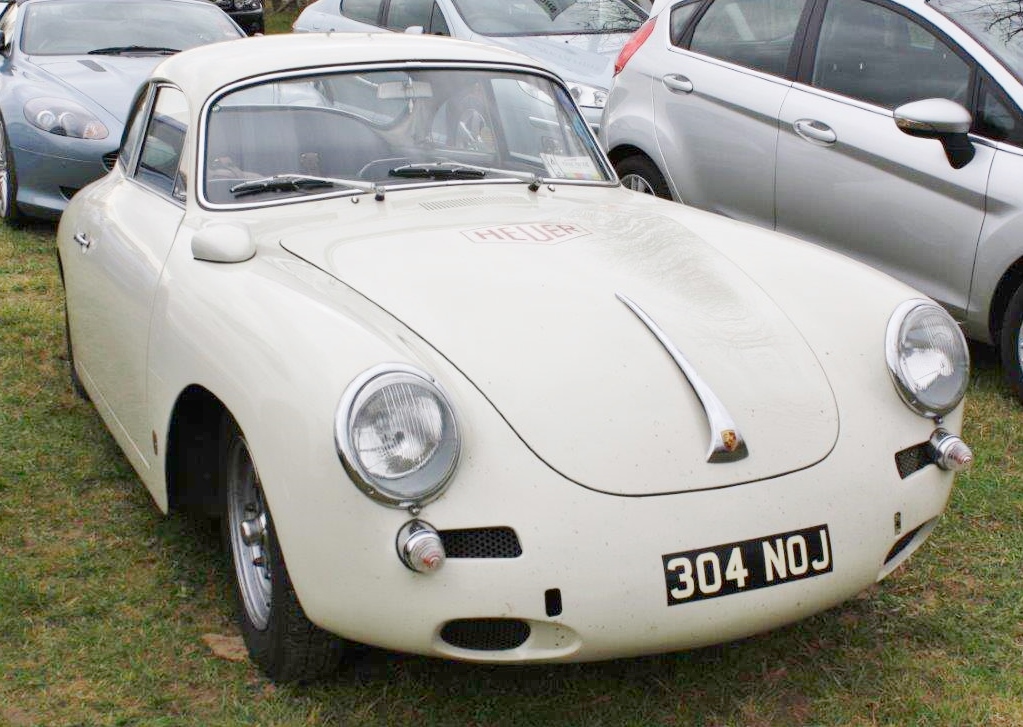-
Insurance
InsuranceAbout our productsLearn about insuringGet a quote Get current values, historical values, model history and more.
-
Valuation
ValuationHagerty valuation toolLook up a vehicle value Get current values, historical values, model history and more.
-
Events
EventsHagerty official eventsHagerty ClubhouseEvent calendar
-
Entertainment
EntertainmentMore to explore
- Portal login
1948 Porsche 356
Pre A Gmund Coupe 1.3 L
Vehicle values by condition
Fair
Condition 4
£711,000
#4 cars are daily drivers, with flaws visible to the naked eye. The chrome might have pitting or scratches, the windshield might be chipped.
Good
Condition 3
£988,000
#3 cars could possess some, but not all of the issues of a #4 car, but they will be balanced by other factors such as a fresh paint job or a new, correct interior.
Excellent
Condition 2
£1,500,000
#2 cars could win a local or regional show. They can be former #1 cars that have been driven or have aged. Seasoned observers will have to look closely for flaws.
Concours
Condition 1
£2,400,000
#1 vehicles are the best in the world. The visual image is of the best car, unmodified, in the right colours, driving onto the lawn at the finest concours.
Insurance premium for a
1948 Porsche 356 Pre A Gmund Coupe 1290
valued at £988,000
£3300.78
/ year*
History of the 1948 - 1952 Porsche 356

1948 - 1952 Porsche 356
The Porsche 356A manufactured between 1955-1959 was a rear-engine, rear-wheel-drive, 2-door sports coupe and convertible designed by Porsche designer Erwin Komenda.
In 1955, following the success of the original ‘Pre A’ model, the Porsche 356A was introduced. Part of factory designation 'Technical Programme 1', the Type 1 or T1 as it became known was followed by a revision in 1957 to the T2. An open Speedster version was also offered along with a high-performance Carrera GS model fitted with a race-derived 4-cam engine.
For the 356A, external changes were minimal, however a larger 1600cc engine was offered along with re-worked suspension and smaller diameter tyres with a wider tread. The keener eye would spot the addition of a rubbing strip below the doors and the use of enamel paint in place of lacquer. Interior changes were correspondingly minimal with a flat-face dashboard following the contour of the now curved windscreen. Other options were the provision for a modern radio, courtesy lighting and a clock.
For the 1957 model year, the revised T2 model was released with the exhausts now routing through the rear bumper over-riders. Mechanically, carburation was changed to Zenith items from the previous Solex.
The 356A was available with five 4-cylinder engines, all naturally aspirated and of flat configuration, ranging from the 1300cc unit of 44bhp to the 1500cc Carrera GS producing 100bhp. Power was transferred via a 5-speed all-synchromesh gearbox.
From its inception, the Porsche 356 was engineered and constructed to make the most of its competition pedigree. This shows in abundance in the road manners and handling. Whilst other manufacturers were using increased capacity engines to gain performance, Porsche concentrated on lightness and engineering balance to achieve these aims, in many cases out-performing comparative machinery with sometimes twice the horsepower.
Save for the very early cars and some high performance models such as the Carrera GS, Porsche 356s are relatively plentiful on the open market. Mechanically, although straightforward, parts can be expensive and difficult to source and in the case of the 4-cam Carrera GS engine, require specialist maintenance.
Rust is the principle consideration of Porsche 356 purchase and ownership. Complex body construction methods ensured plenty of hidden areas where serious structural rust can take hold. Consequently, properly restored or sound original cars command a high premium.
As with all Porsche 356A derivatives, be they the coupe, Cabriolet, Convertible D or Speedster, desirability is strong. The car's long standing appeal has been enhanced over the years by competition success and celebrity association enabling it an elevated position in high fashion.
Speedster and Carrera GS models enjoy a particularly strong following, the latter attributable for the most part to its high revving race-bred engine.
At its launch the 356A enjoyed a privileged position in the market with no true competitor from other manufacturers. It could be said that the typical Porsche 356 customer would have also taken time to investigate the AC Ace, Jaguar XK120 and XK140, and the MGA, but these cars were considerably less sophisticated and in some cases more expensive.
Hagerty Newsletter
Get your weekly dose of car news from Hagerty UK in your inbox

ADVERTISEMENT